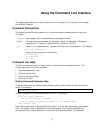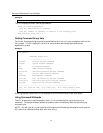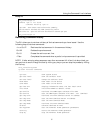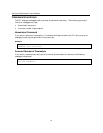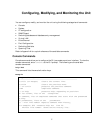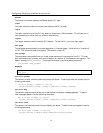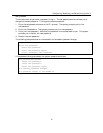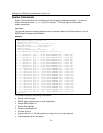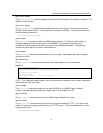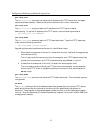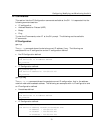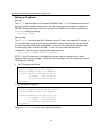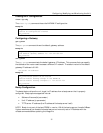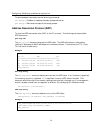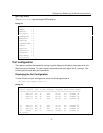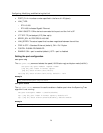
Configuring, Modifying, and Monitoring the Unit
21
get-stst-level
The get-stst-level command displays the self-test level (Disable or Enable) of the device. The
default value is Enable.
set-stst-level
The set-stst-level command sets the self-test level of the device. There are two levels of
self-test: Disable and Enable. The self-test level is stored in NVRAM. To set the self-test level,
use the following command:
set-stst-level <level>
warm-reset
The warm-reset command resets the SNMP Agent software. The Switch configuration is
changed according to the values stored in the NVRAM. This command permits you to
refresh the Switch configuration after a change of the NVRAM parameters. The statistics
counters are also reset by the warm-reset command.
cold-reset
The cold-reset command causes the switch to cold-reset. Cold reset is equivalent to power
cycling the switch.
get-last-err
The get-last-err command retrieves the most recent system failure information.
Example
SYS_console>get-last-err
System information since the last hardware reset
------------------------------------------------
Software resets number : 0
Fatal error text :
Fatal error uptime : 0 days, 0:15:36.00
SYS_console>
NOTE: The “Software resets number” value is the number of executed “warm resets” commands
issued after the last “cold reset.”
init-nvram
The init-nvram command resets the non-volatile RAM on the SNMP Agent to default
values. The reset takes effect after you reboot (warm or cold reset) the unit.
get-sw-file
The get-sw-file command retrieves the SNMP Agent Software file name.
set-sw-file
The set-sw-file command sets the name of the file downloaded by TFTP. This name must
match the name of the agent software file on the TFTP server. To set the software file, use the
following command:
set-sw-file <filename>



